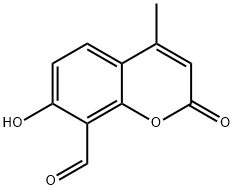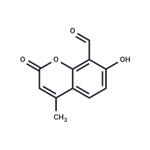A cell-permeable coumarin
o-hydroxyaldehyde compound that inhibits IRE1 RNase activity in a time- and dose-dependent manner (IC
50 = 550, 230, 180, 100, and 45 nM, respectively, with 0, 2, 4, 8, 16, min drug preincubation in FRET-based RNA cleavage assays) by covalently targeting IRE1 Lys907 via Schiff base formation, effectively preventing ER stress-induced site-specific mRNA splicing as well as RIDD (Regulated IRE1-Dependent Degradation) mRNA degradation (IC
50 = 6.9 and 4.1 μM, respectively, against
Xbp1 splicing and
Scara3 degradation) in MEF cultures following Tunicamycin (Cat. No.
654380) treatment. Also demonstrated to inhibit ER capacity expansion (Effective conc. 32 μM) and amylase secretion (IC
50<2 μM) upon stress induction by Dexamethasone (Cat. No.
265005) treatment in rat AR42J tumoral acinar pancreatic cells. Structural analysis reveals that the reduced water accessibility to Lys907 in IRE1 native conformation accounts for the unusual stability of Lys907 Schiff base formation and forms the basis of selective IRE1 RNase inhibition by 4μ8C and STF083010 (Cat. No.
412510). Although 4μ8C, but not STF083010, is also shown to inhibit IRE1 autophosphorylation by Schiff base formation with IRE1 Lys599 in the absence of ADP, cellular nucleotide prevents 4μ8C from targeting IRE1 Lys599 and inhibiting IRE1 kinase activity intracellularly.


